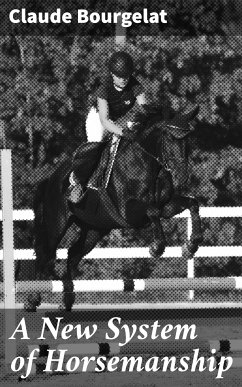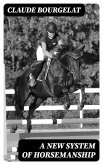In "A New System of Horsemanship," Claude Bourgelat presents a revolutionary approach to equestrian education that blends practical knowledge with a deep psychological understanding of horse behavior. Written in the 18th century, a time when traditional horsemanship often relied on brute force and instinct, Bourgelat champions a systematic and humane method that emphasizes communication, empathy, and the physical training of both horse and rider. Through meticulous observation and innovative techniques, he lays the groundwork for modern equestrian practices, offering a comprehensive guide that remains influential in the field of horsemanship today. Claude Bourgelat, a prominent veterinarian and equestrian of his time, was driven by his passion for both animals and scientific inquiry. His background in veterinary medicine likely informed his emphasis on the well-being of horses, merging agricultural practices with humane training approaches. His experiences in the burgeoning age of enlightenment, characterized by a quest for knowledge and reform, positioned him uniquely to challenge prevailing methods and advocate for a more compassionate treatment of horses. For readers passionate about equestrianism, animal welfare, or the history of veterinary practices, Bourgelat's "A New System of Horsemanship" is an essential addition to their libraries. This seminal work not only provides practical guidance but also invites reflection on the ethical dimensions of training, making it a thought-provoking read for both seasoned riders and newcomers alike. In this enriched edition, we have carefully created added value for your reading experience: - A succinct Introduction situates the work's timeless appeal and themes. - The Synopsis outlines the central plot, highlighting key developments without spoiling critical twists. - A detailed Historical Context immerses you in the era's events and influences that shaped the writing. - A thorough Analysis dissects symbols, motifs, and character arcs to unearth underlying meanings. - Reflection questions prompt you to engage personally with the work's messages, connecting them to modern life. - Hand-picked Memorable Quotes shine a spotlight on moments of literary brilliance. - Interactive footnotes clarify unusual references, historical allusions, and archaic phrases for an effortless, more informed read.
Dieser Download kann aus rechtlichen Gründen nur mit Rechnungsadresse in A, B, BG, CY, CZ, D, DK, EW, E, FIN, F, GR, H, IRL, I, LT, L, LR, M, NL, PL, P, R, S, SLO, SK ausgeliefert werden.









